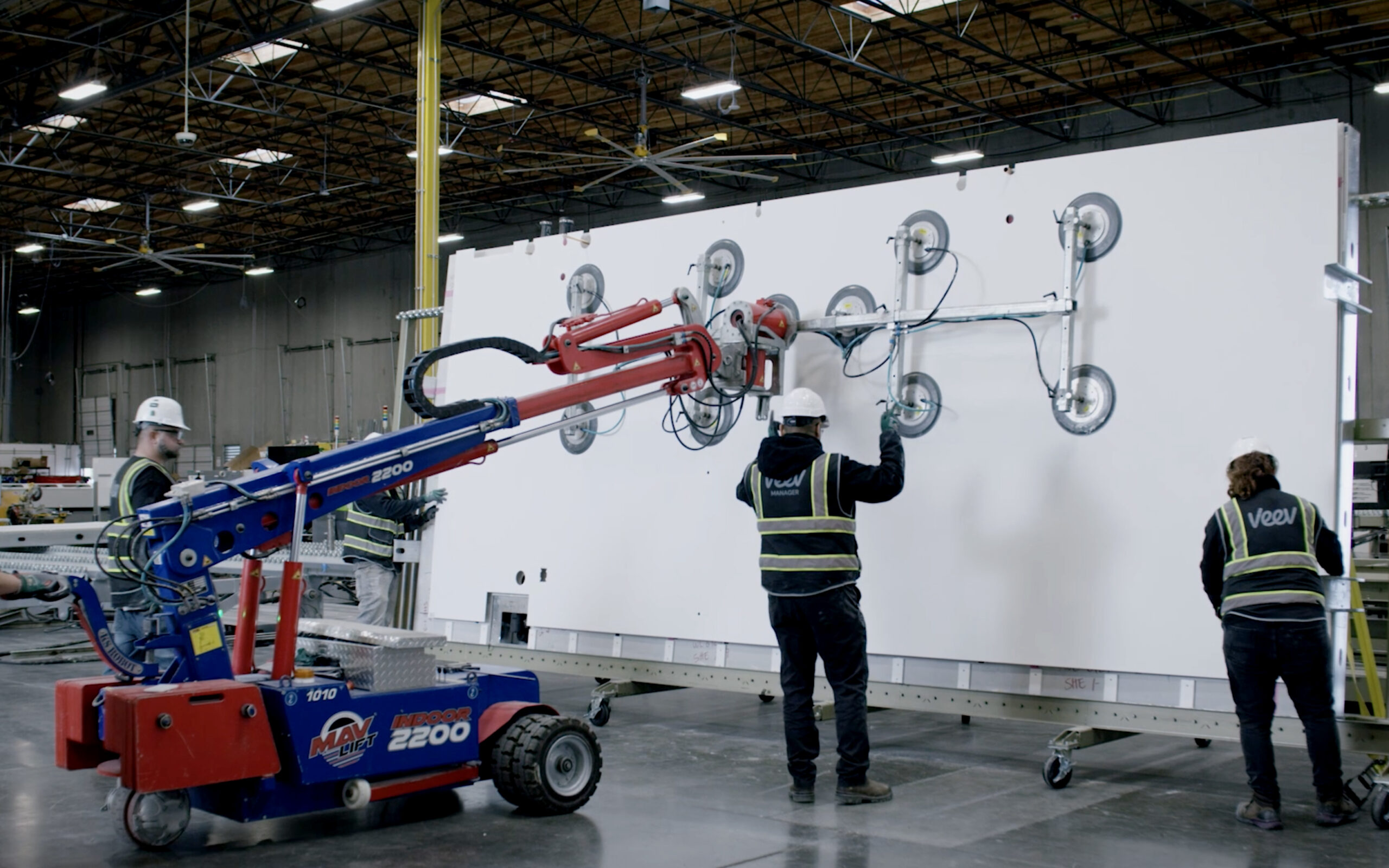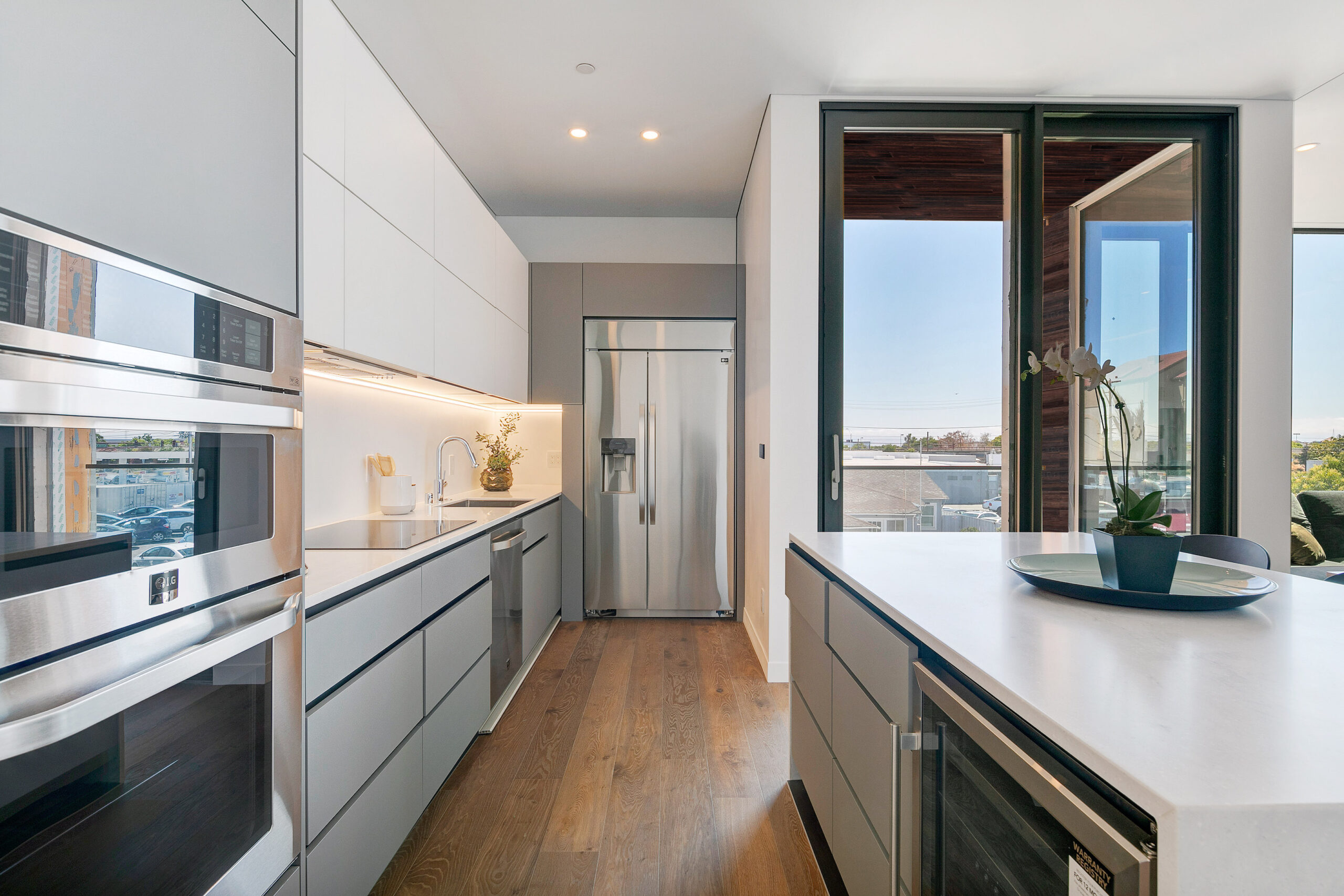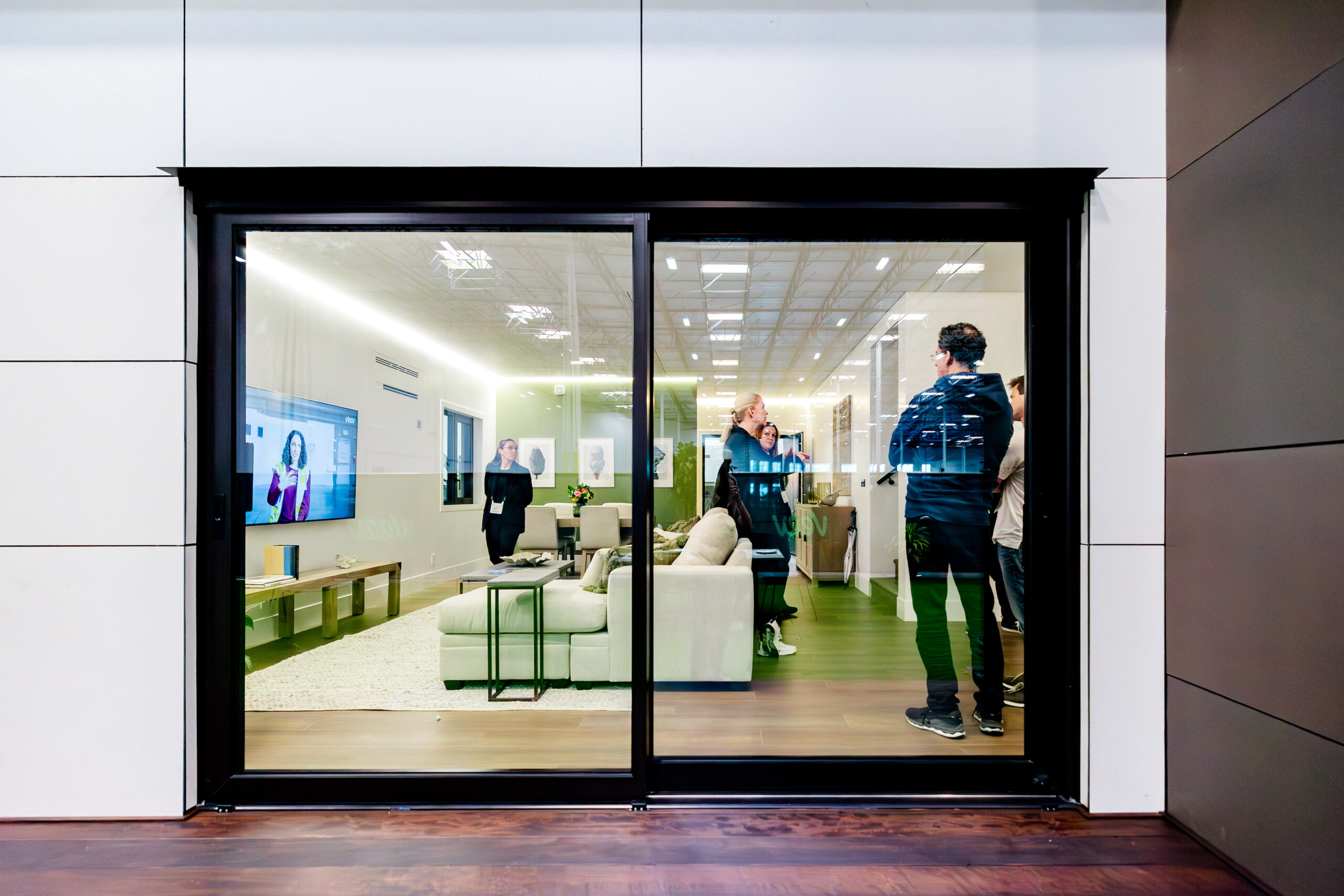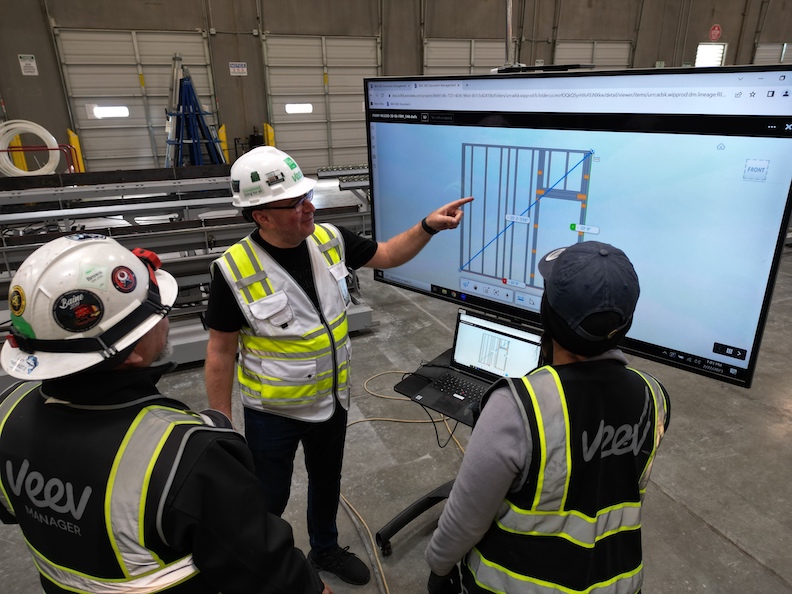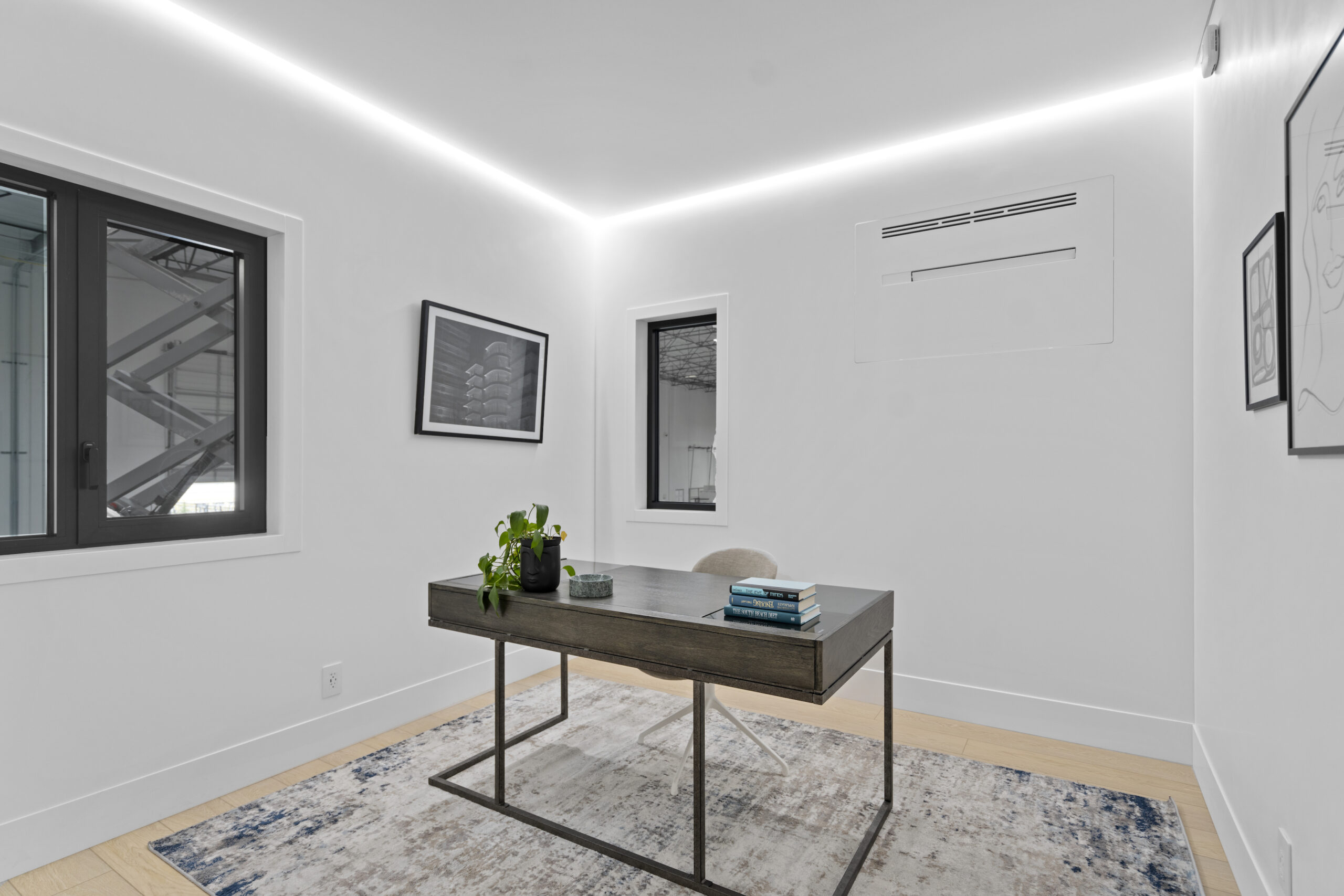
efficient construction
These phrases are all too common when building a home. Between supply chain back-ups, labor shortages and weather delays, 85% of new construction homebuyers experience pushed back timelines.
The underlying issue? Homes have largely been built the same way for centuries, and the pandemic only pronounced the industry’s longtime inefficiencies. At the same time, the United States is experiencing a massive housing shortage of 6.5 million homes and a declining construction labor pool.
At Veev, we’re fundamentally rethinking homebuilding to solve these challenges. While a traditional single family home build takes 6.5 to 12 months on average,
we can build in as little as four weeks, depending on the complexity of the project. And overall, our total production is over eight times faster than traditional construction.
We achieve this feat by bringing almost everything in-house so we’re not at the mercy of the larger supply chain or restrictive subcontractor availability. This involves significantly reducing the material line items we use and building most of a home’s components ourselves, from cabinets to windows to backsplashes. Our biggest time saver, though, is our panelized closed wall system powered by our in-house building technology. Our wall panels are fully built, outfitted with MEPF, inspected and closed in our digital fabrication facility to make the onsite build quick and seamless.
The result is a brand new category of home, made with the highest quality materials and cohesive smart technology — all built in a fraction of time the industry is used to.
Our five-step process, driven by vertically integrated technology
With more than 35 patents pending, our proprietary technology powers our entire build, from digital design renderings to final onsite assembly. Owning every step of the process in-house offers us unprecedented control of costs and timeline — in addition to precision to ensure quality.

efficient construction
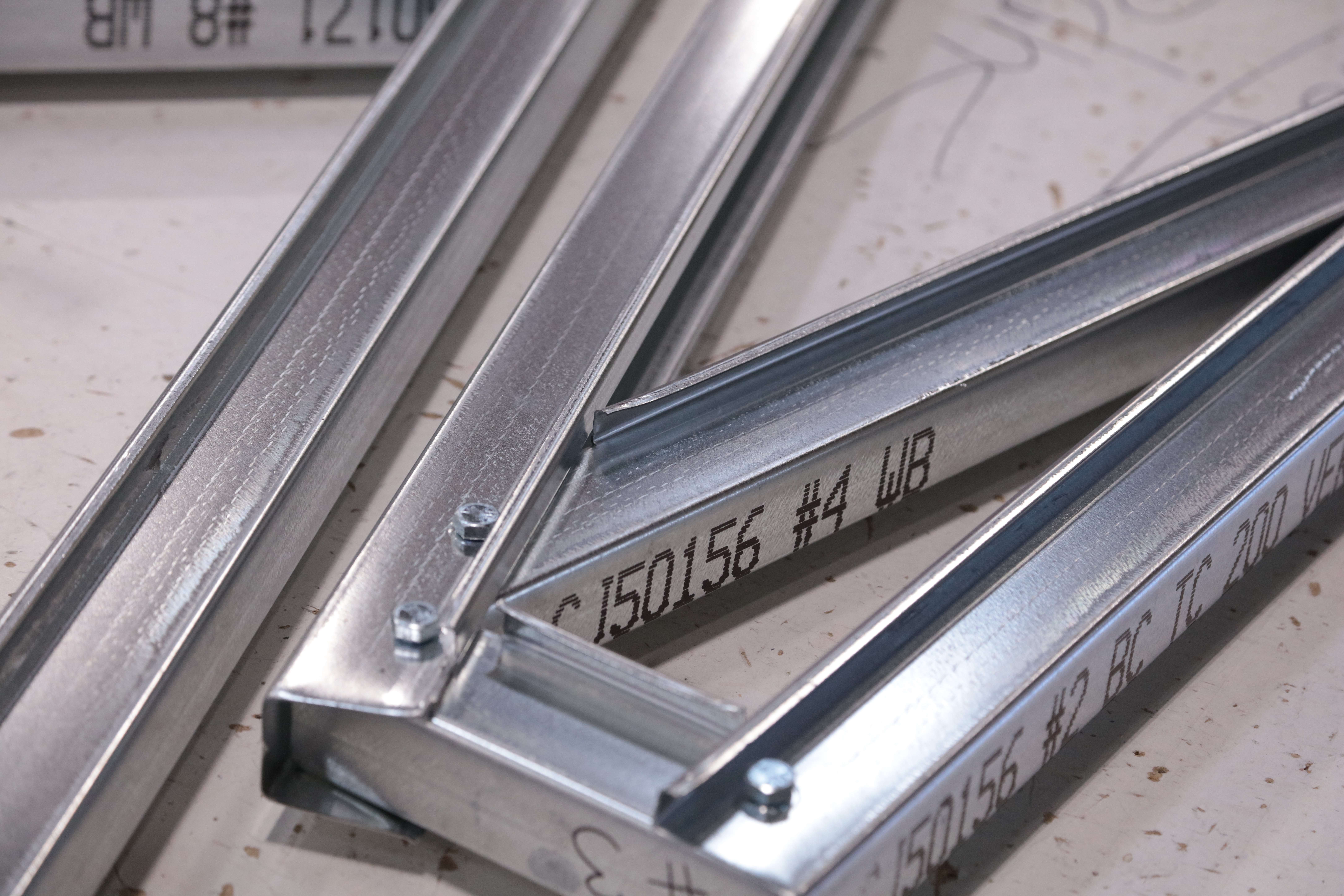
1. Smart material sourcing
We started rethinking homebuilding by investigating whether traditional materials made the most sense.
Our analysis informed our choice to use cold-formed, light-gauge steel instead of wood to frame our walls. This allows us to bypass the need for specialized carpentry and lumber supply chain issues, which worsened during the pandemic and continue to cause costly delays. Wood alone can cause up to seven times increase in lead times.
Steel fits seamlessly into our digital fabrication process, and it enables us to build more durable and eco-friendly homes. The same is true for High Performance Surface (HPS), an ultra-durable solid surface material made primarily of natural minerals and some acrylic. By using this singular material to build components of the home in-house — walls, kitchen cabinets, countertops, backsplashes and more — we cut down on line items and control the process.
Overall, Veev uses less than 1,000 line items in each single family home build, while a traditional build requires at least 20 times that amount.
2. Digital design and process mapping
When we partner with a developer, we create digital rendering of a home within our personalized digital twin software. This allows us to visualize how core elements of the home will come together to create every room.
The rendering is an exact digital replica of the home. This technology allows us to build with incredible precision, mapping out every line item and providing direct instructions to our machinery on the manufacturing floor. Our team can track the full bill of materials in the Veev Dashboard throughout the process to have constant visibility into where an item is, where it will go in the build, how much it weighs and so much more.
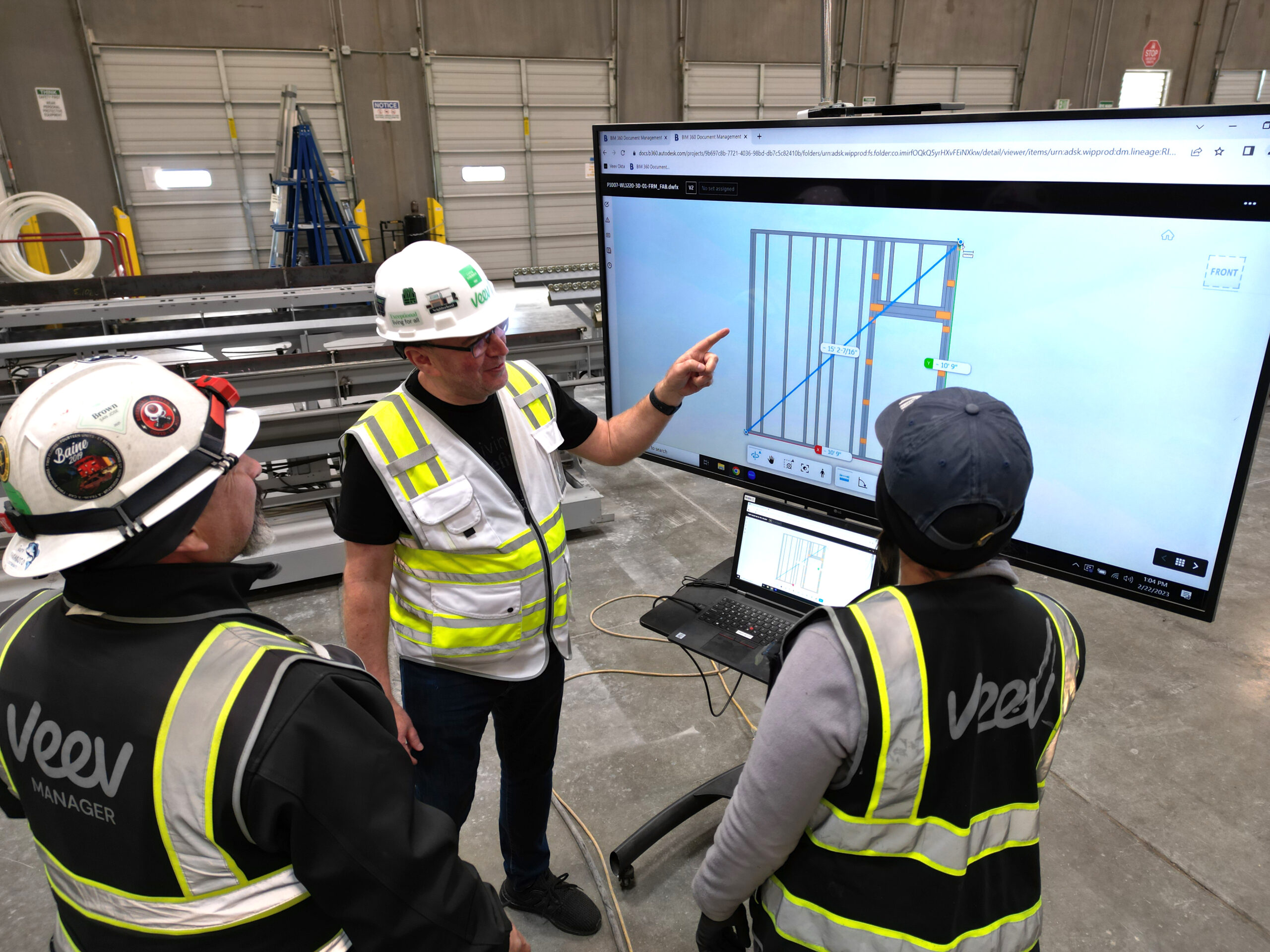
Lastly, our 1:1 digital model of the home can simulate the onsite build sequence from start to finish, helping us predict and measure efficiency, transportation and other needs. Each element allows us to anticipate and address logistical concerns before they arise.
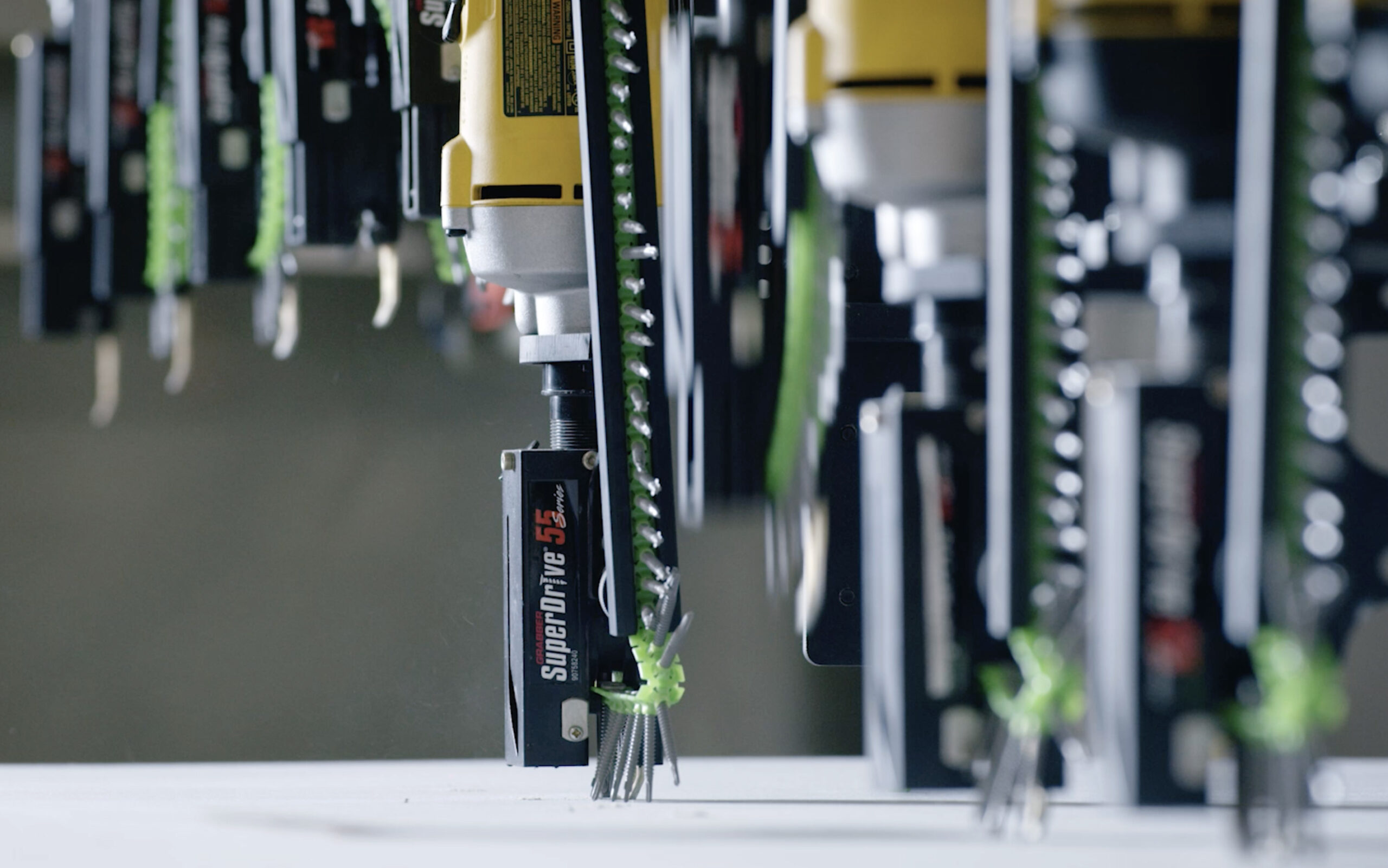
3. Inside our digital fabrication facility
When it’s time to bring the home to life, we take a manufacturing approach with our technology-powered assembly line. Our design software feeds information into our steel-forming machines and HPS CNC (computer numeric control) machines, which automatically cut and print wall components to exact specifications, under supervision by our team.
In addition to framing and sheathing in our facility, our walls are outfitted with all mechanical, electrical, plumbing and fire protection (MEPF) components — a process that would require six individual trade certified workers on a traditional construction site. The automated assembly line process involves repeatable steps, cutting down on time and potential for errors. Overall, we’ve reduced our time cutting HPS from 40 hours to 2 hours, using our precision technology. This approach also eliminates the need for specialized trade labor, which has become harder and more expensive to find.
4. Inspection at our digital fabrication facility cuts onsite build time
Municipal inspections are a big reason for delays in traditional builds. Each new addition to the home requires regulatory approval before progress can continue. In fact, onsite inspections cause delays on roughly three-fourths of projects.
Our closed wall system eliminates the need for inspections at the build site — an industry first. Closed walls undergo thorough quality checks at each stage of the build ensuring they meet Veev standards. All MEPF components in the completed wall are then verified to meet NTA regulation standards before they even arrive, reducing the time spent waiting for various inspectors onsite.
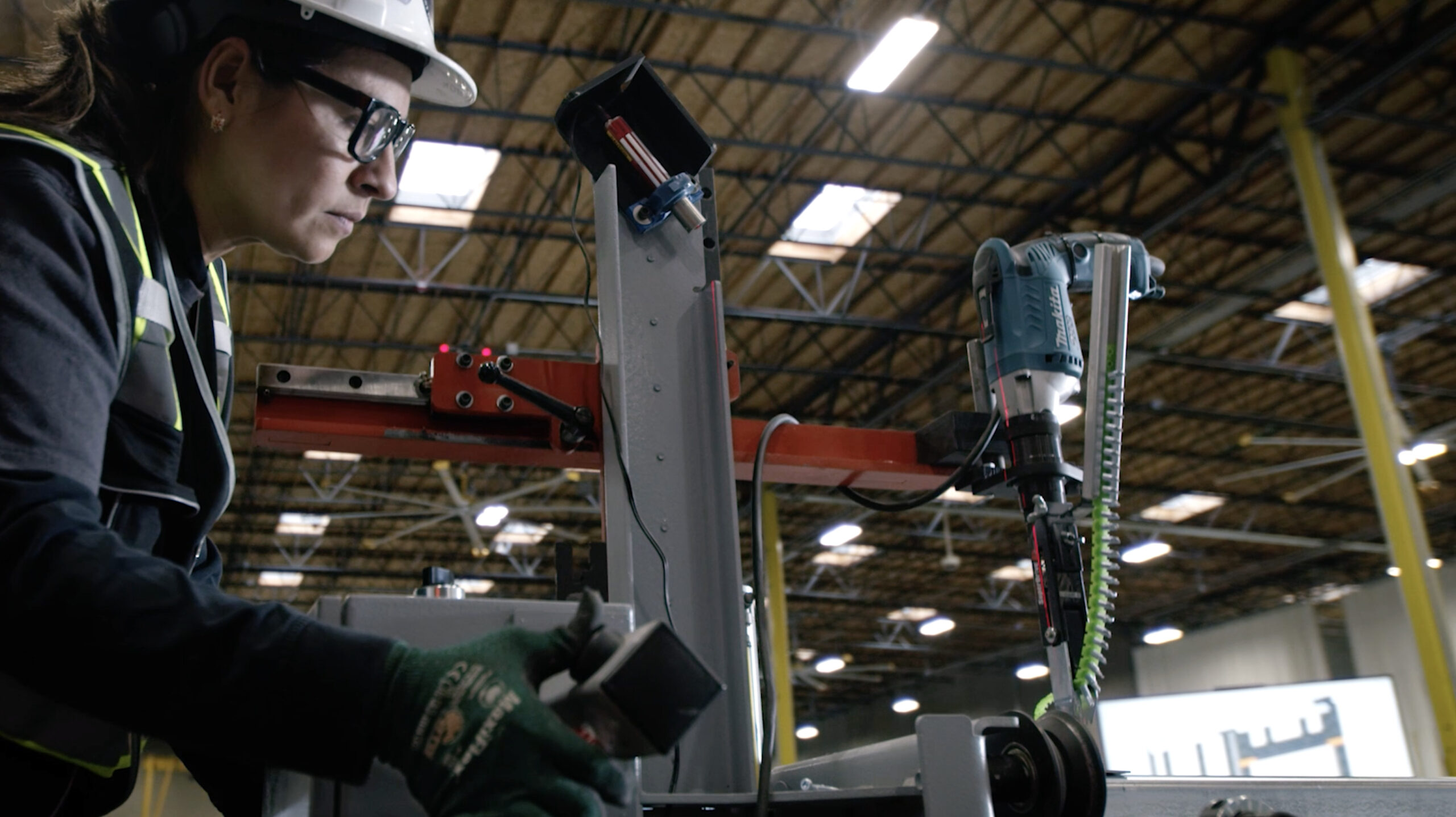
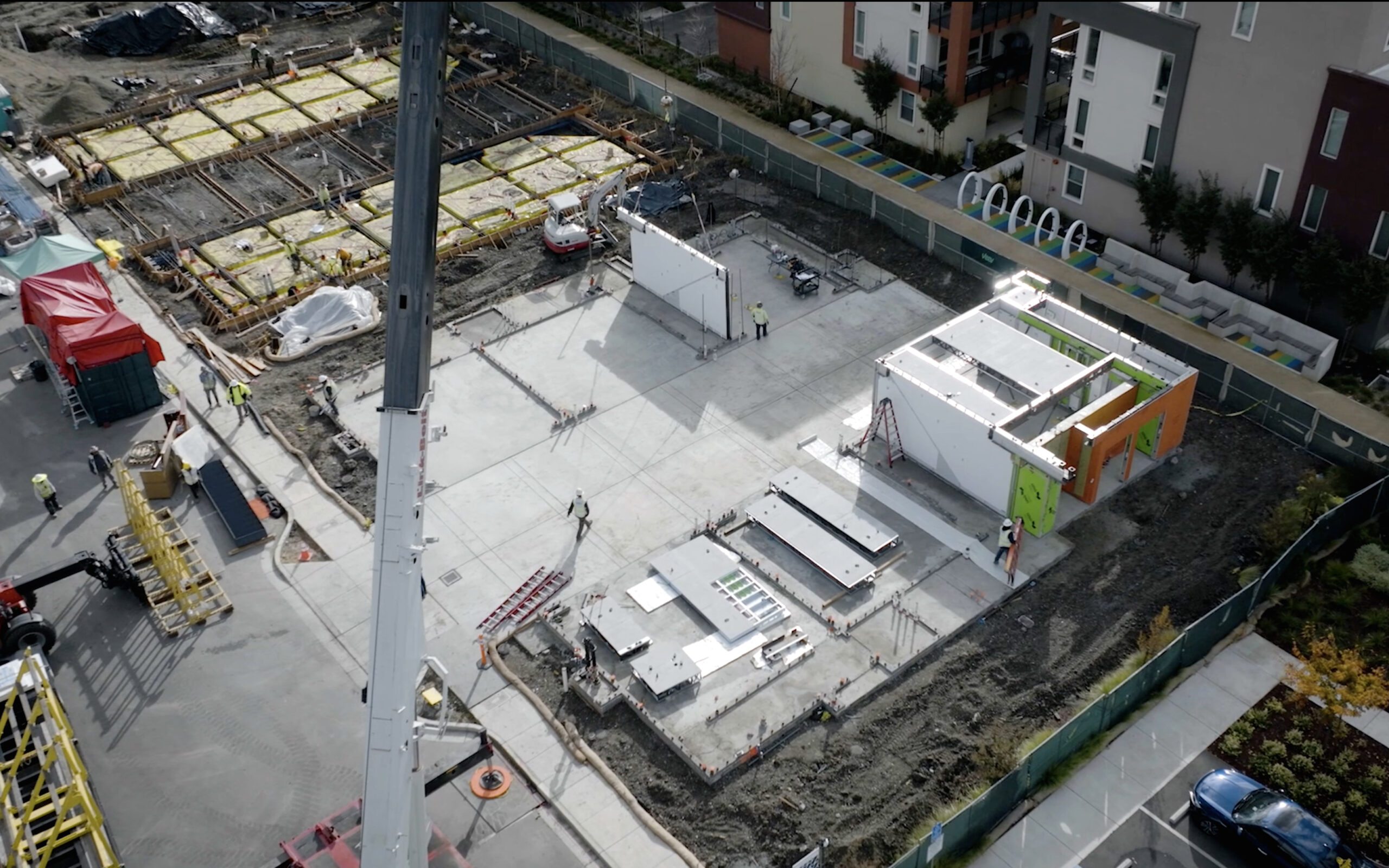
5. Plug & Play system makes onsite assembly ultra-quick
Once the walls are closed on both sides and inspected at the digital fabrication facility, they’re transported to the build site to be connected. This reduces the need for costly and time-consuming transportation of materials, equipment and technology, in addition to minimizing the risk of common onsite delays including inclement weather. Roughly 50% of home builds experience delays that exceed three months, a third of which are due to weather related issues.
The onsite build begins with our helical pile foundation, in which steel screws are anchored into the ground to support the bed frame. The process in itself saves time because it doesn’t require complete excavation of the site as a concrete slab foundation would. The foundation serves as the support structure for the closed walls and, in turn, our Plug & Play system.
Plug & Play allows walls to be easily connected using a single cable, connecting all MEPF components through one output in the top right corner of each wall panel. Instead of waiting for onsite wiring or specialized plumbing,
Plug & Play means two walls can be connected in as little as 10 minutes.
Driving down cost, time and complexity
The carefully managed product lifecycle of each Veev home enables us to build at faster rates while improving quality at the same time. Our vertically integrated product lifecycle management system streamlines each element of the build process and achieves a new standard of efficiency. What we have already achieved is only the beginning. Our team is always looking for new ways to improve.
Our commitment to efficiency doesn’t end once a Veev home is complete. It extends throughout the product life cycle to the most important step: homeownership. Learn more about the technology embedded into every Veev home: the Veev Digital Home.
Are you a developer ready to learn more? Schedule a tour today with our Build with us contact form.
